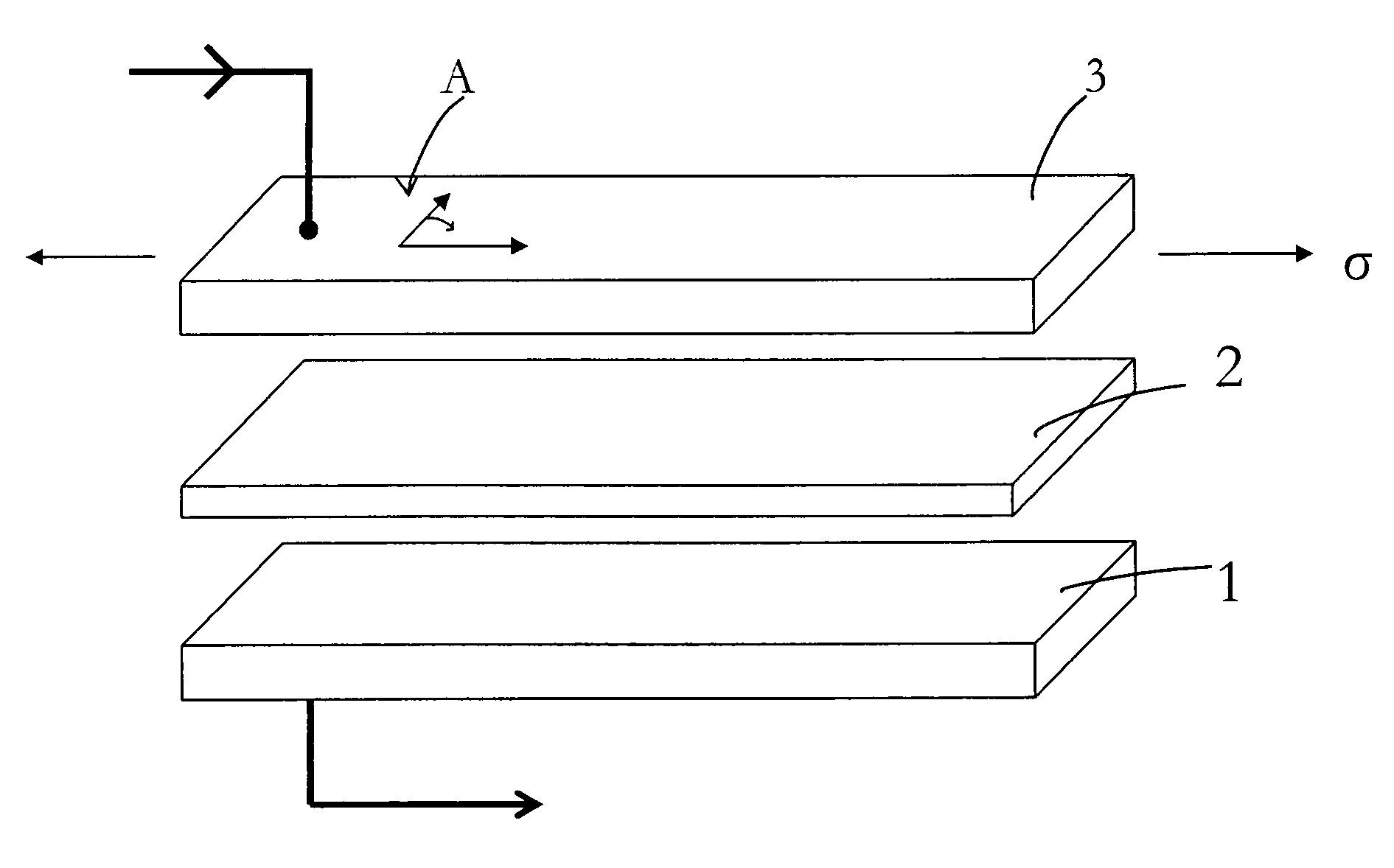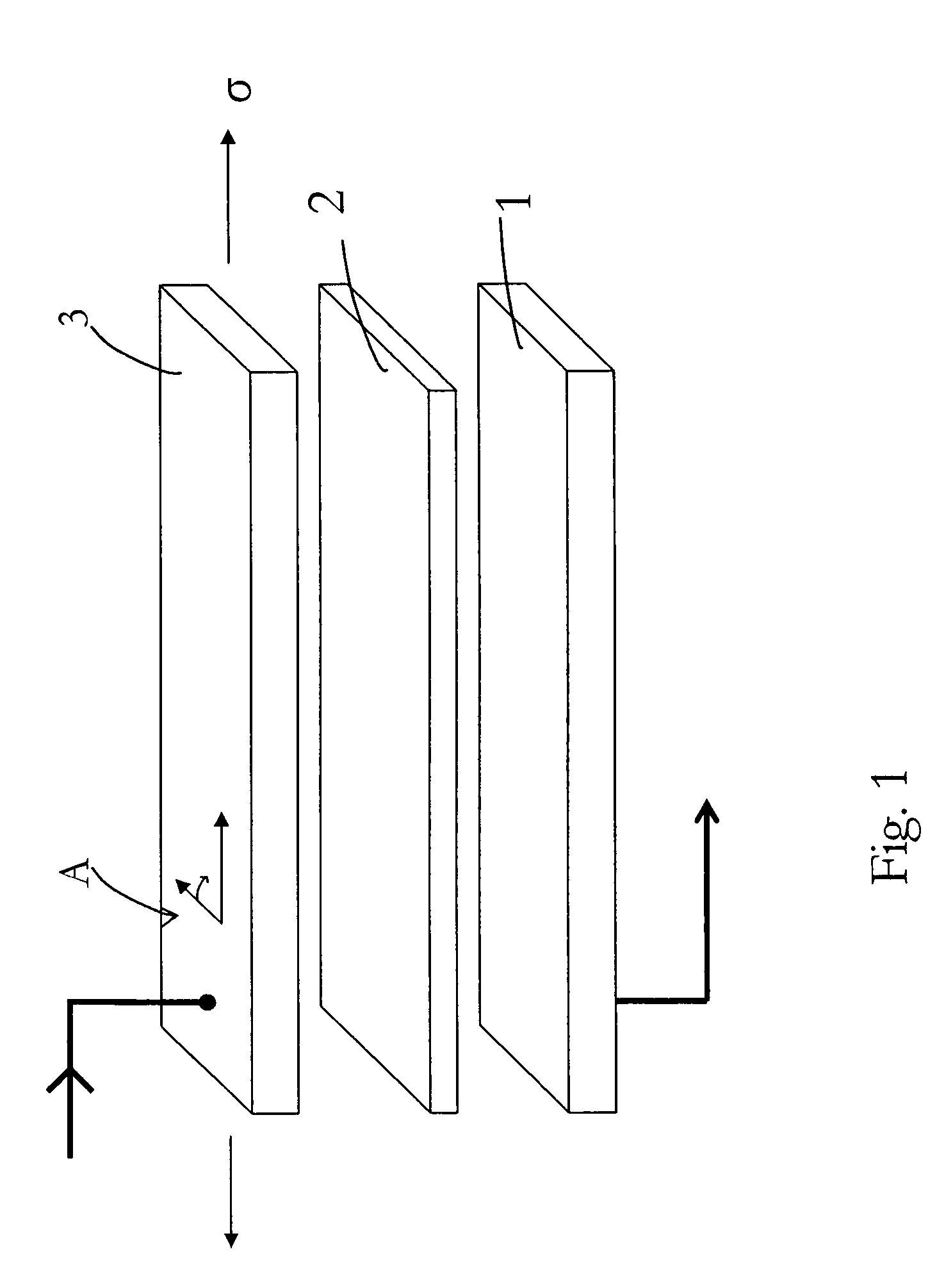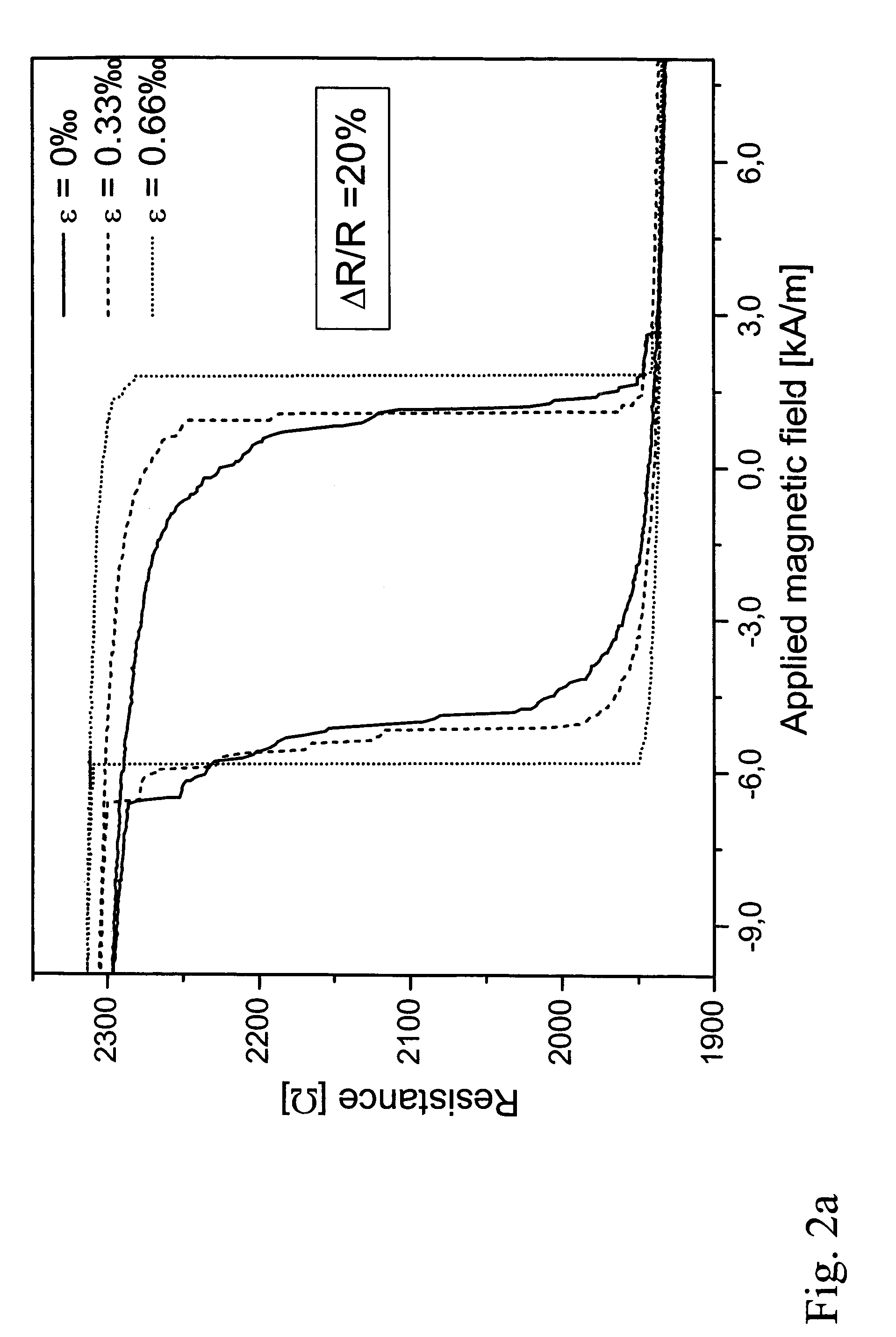TMR sensor
a sensor and tmr technology, applied in the field of sensors, can solve problems such as large resistance changes, and achieve the effect of maximizing miniaturization and accurately and precisely detecting mechanical values
- Summary
- Abstract
- Description
- Claims
- Application Information
AI Technical Summary
Benefits of technology
Problems solved by technology
Method used
Image
Examples
Embodiment Construction
[0027]FIG. 1 is an exploded view of a magneto-elastic TMR sensor used to measure mechanical magnitudes. This sensor comprises a magnetically hard layer 1 which is separated by a tunnel barrier 2 from a magnetostrictive layer 3 which in particular may be an alloy containing CoFe. By applying an external mechanical stress (arrow σ), the direction of magnetization (arrow A) changes in the manner described above and thereby the resistance of the system crossed by the current I. Experiments carried out on such sensors with magnetically soft CoFe layers and amorphous (FeCo)SiB alloys are described below.
[0028]The magnetic tunnel elements are made by sputtering. The magnetically pinned layer consists in all samples of an 8 nm Ir23Mn77 antiferroamgnetic (AF) layer and of a 2.5 nm layer of Co—Fe. A 1.5 nm thick layer of aluminum is deposited as the tunnel barrier and is oxidized by plasma oxidation. Magnetostrictive Fe50Co50 and amorphous (Fe90Co10)78Si12B10 alloys nominally 6 nm thick are u...
PUM
 Login to View More
Login to View More Abstract
Description
Claims
Application Information
 Login to View More
Login to View More - R&D
- Intellectual Property
- Life Sciences
- Materials
- Tech Scout
- Unparalleled Data Quality
- Higher Quality Content
- 60% Fewer Hallucinations
Browse by: Latest US Patents, China's latest patents, Technical Efficacy Thesaurus, Application Domain, Technology Topic, Popular Technical Reports.
© 2025 PatSnap. All rights reserved.Legal|Privacy policy|Modern Slavery Act Transparency Statement|Sitemap|About US| Contact US: help@patsnap.com



